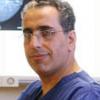Breast expert, Mr Simon Marsh says, "Breast cancer itself is not a single disease but several diseases that happen to occur in the breast". Breast cancer starts in the cells of the breast, usually either the ducts (ductal cancer) or the lobules (lobular cancer). However there are also several other types. Mastalgia (breast pain) although an undoubted nuisance is not normally a symptom of breast cancer, and so it is important to know what the early signs of a potential cancer are.
The Symptoms of Breast Cancer include:
- Definite lump
- Nipple discharge
- Inverted nipples
- Dimpling of breast skin
- Rashes around the nipple (similar to eczema)
The most common symptom is a definite lump. Although most lumps are not cancer at all, but other sorts of benign lumps such as breast cysts, all lumps must be checked by a specialist. Occasionally a lump in the armpit can also be related to breast cancer.
What are the other breast changes to look out for?
There are other changes for which women should look out. Most of these will not be related to breast cancer but all changes should be checked:
Nipple discharge is very common, particularly towards the menopause. Nipple discharge will nearly always be harmless, unless there is a lump present as well.
Inverted nipples - Similarly it is very common for the nipples to turn in as women get older. If a nipple is turned in (inverted) and there is a lump then this might be due to a cancer.
The breasts can also, commonly, change size with age. As the menopause approaches the gland tissue in the breast is replaced by fatty tissue and this can cause a change in size, often greater on one side compared with the other.
Breast dimpling - Some women notice a dimpling or puckering of the skin and this must always be reported to a doctor. Sometimes it will be due to age related changes in the elastic tissue in the breast. Sometimes there will be a lump or an area of abnormal breast tissue associated with the dimpling and this may be due to a cancer.
Rashes around the nipple can also be quite common. Most of these will turn out to be simple dermatitis or eczema. There is a very rare form of early breast cancer called Paget’s disease that can sometimes look like eczema. An important difference is that normal eczema tends to be only on the areola around the nipple whereas Paget’s disease can go onto the nipple itself.
Breast pain (mastalgia) is almost always completely harmless (although undoubtedly a nuisance).
For full information see Breast Cancer FAQs
The time of a woman’s life when her ovaries stop releasing an egg (ovum) on a monthly cycle, and her periods cease
Full medical glossary







